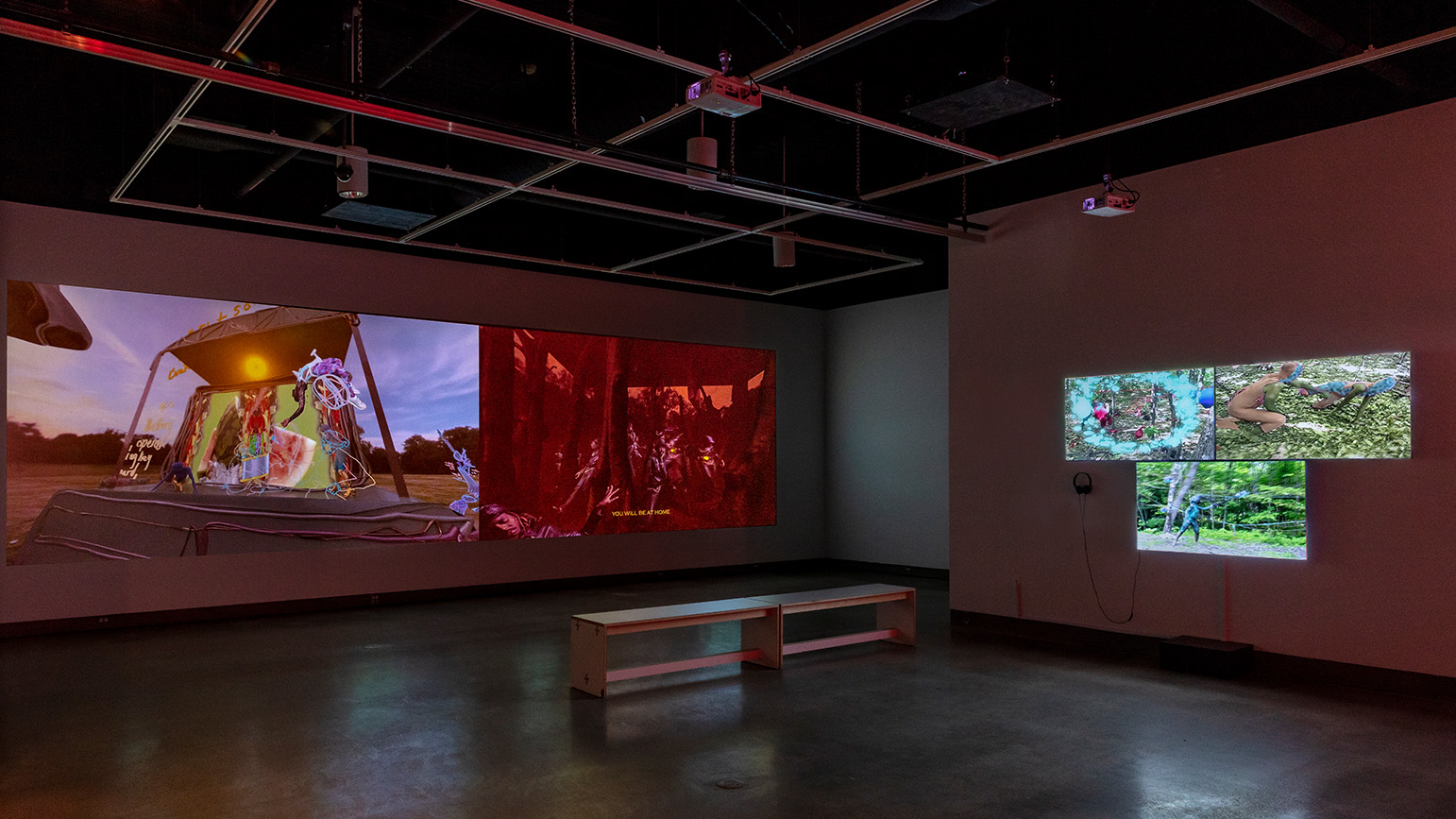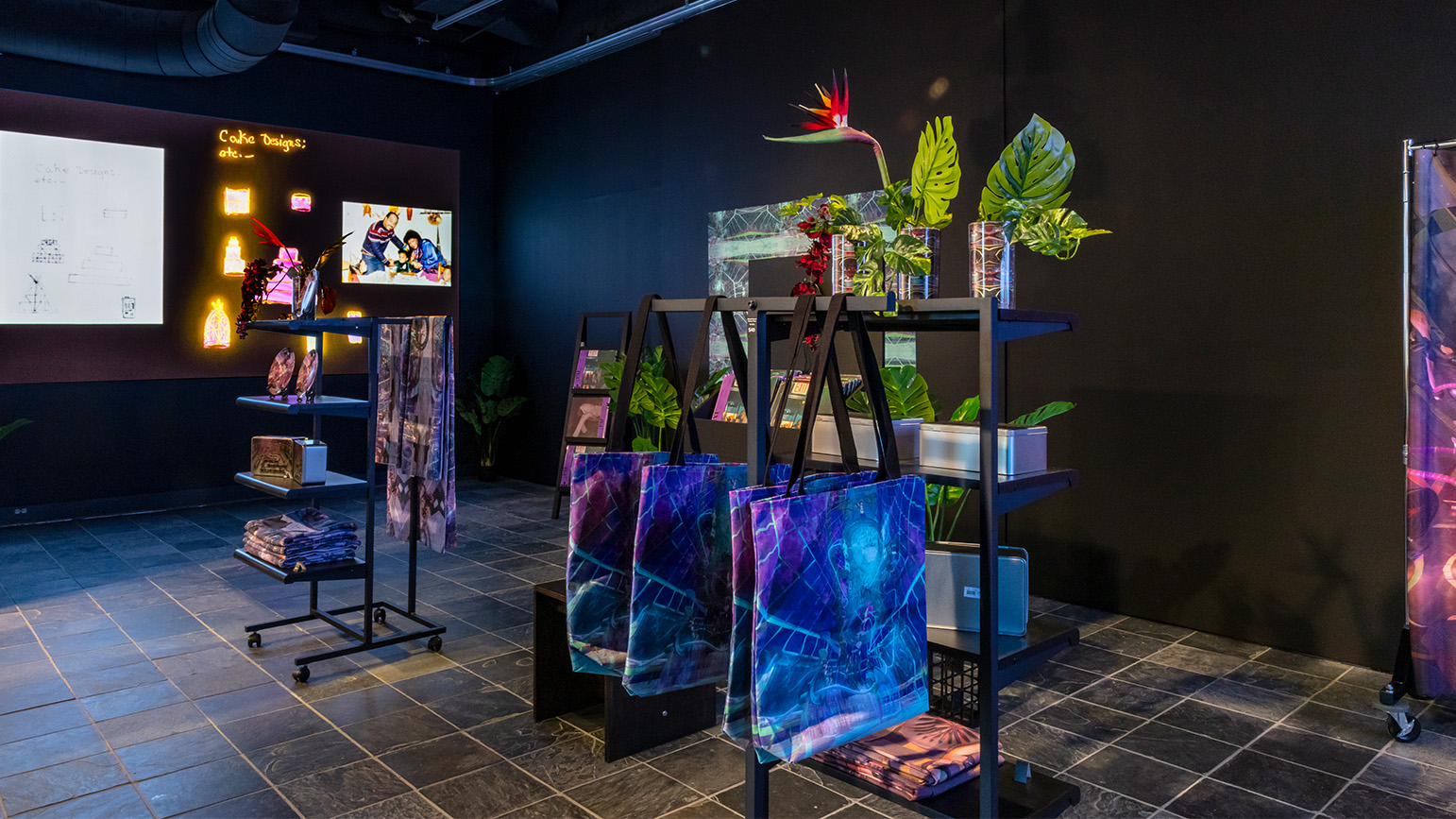
Jacobly Satterwhite’s work incorporates a broad set of real and fantastical references, drawing from sources that include modernism, mythology, video gaming, queer theory, and Black culture. Now on view at the Miller ICA, “Spirits Roaming on the Earth,” the first major monographic survey of his work, presents 3D animated videos, sculptures, electronic dance tracks, and performance.
A monograph, titled How lovly is me being as I am, that is the companion to the exhibition, will launch with an event on Thursday, October 21 from 6 to 8 PM at the Carnegie Museum of Art. The event, which is free an open all in person or through an event live stream, will feature an conversation between Satterwhite and writer, critic, and educator Sasha Bonét.
To find out more about the exhibition and companion monograph, we spoke with the Miller ICA Director and School of Art Professor Elizabeth Chodos, who curated the exhibition.

When did you first encounter Satterwhite’s work? Is there an early work in the exhibition that first piqued your interest in his practice? What about that work commanded your attention?
My first experience with Jacolby’s work was seeing “Reifying Desire 5.” I was planning the curriculum for Ox-Bow in 2013, I believe, with a colleague, Mike Andrews, who showed me the work. I remember being completely caught off guard by it and totally mesmerized. At the time, there were very few artists using 3D animation software with such dexterity. It was irreverent, hilarious, intense, and extremely smart. I have been a huge fan of his work ever since, and it’s just gotten better and better. When I started working at CMU, I immediately knew I wanted to find a way to work with Jacolby, especially since so many of our students are interested in animation, interdisciplinarity, and working at the intersection of art and technology.
Dance, movement, and music is omnipresent in this exhibition. Tell us a bit about how Satterwhite uses these elements in his works and why they’re important for his practice.
In the book that’s launching on Thursday, Malik Gaines wrote this beautiful essay about Jacolby’s performance practice. At one point he describes Jacolby’s performances as voguing as a martial art. I think in many cases his performance is about defying limitations and celebrating Black and queer traditions around congregation and dance. Performance in his work takes on many dimensions; it is also means to heal, to fight, and to assert control. It’s also a conceptual tool for abstraction and strategic illegibility — that which can be defined can be controlled and Jacolby’s moves always slip out of an easy definition.

Images and snippets of video are repeated from work to work in the exhibition. Why is it important for Satterwhite to reference previous works and to repeat certain images?
Jacolby’s work constantly iterates on itself, and I think the repetition of motifs and imagery is a way towards a kind of circularity that speaks to the cyclical nature of time. There is a linearity in his work, much in the way that time is experienced linearly, but there is also a kind of subversion and resistance to that linearity through repetition and interconnection between his works. To me, this is partially about resurrection and paying homage to ancestors. It’s about acknowledging that we’re all a part of a life and death cycle and that people live on in spirit even if they are no longer on this plane — like the title speaks to: Spirits Roaming on the Earth. It was a lyric from one of his mother’s songs. Her influence, her drawings, and her voice animates so much of the work. Letting something shift and change and show up in multiple contexts gives it life.
How does Satterwhite use the ponytail, which appears in several works, to explore notions of gender and power?
“Forest Nymph” is the earliest work in the exhibition and the ponytail motif shows up there for the first time. Satterwhite performs out in the forest, en plein air, queering a beloved Impressionist tradition of working improvisationally in nature. He performs as Robin, a persona that blends the artist and his mother into a multi-gendered nymph-like warrior who combats animated viral orbs with a kanekalon ponytail. Robin wields their weapon by twisting, voguing, and serving moves that require extraordinary physical dexterity, blending ball scene choreography and video game vernacular. A survivor of childhood cancer, Satterwhite performs a healing ritual where Robin claims bodily control through movement that transforms a Black femme beauty product into a protective weapon against external threats. It’s like in video games when a character has a special weapon or move that no one else in the game has and it’s the one thing that saves them or gets them through to the next level.
“Jacobly Satterwhite: Spirits Roaming on the Earth” continues through December 5.




